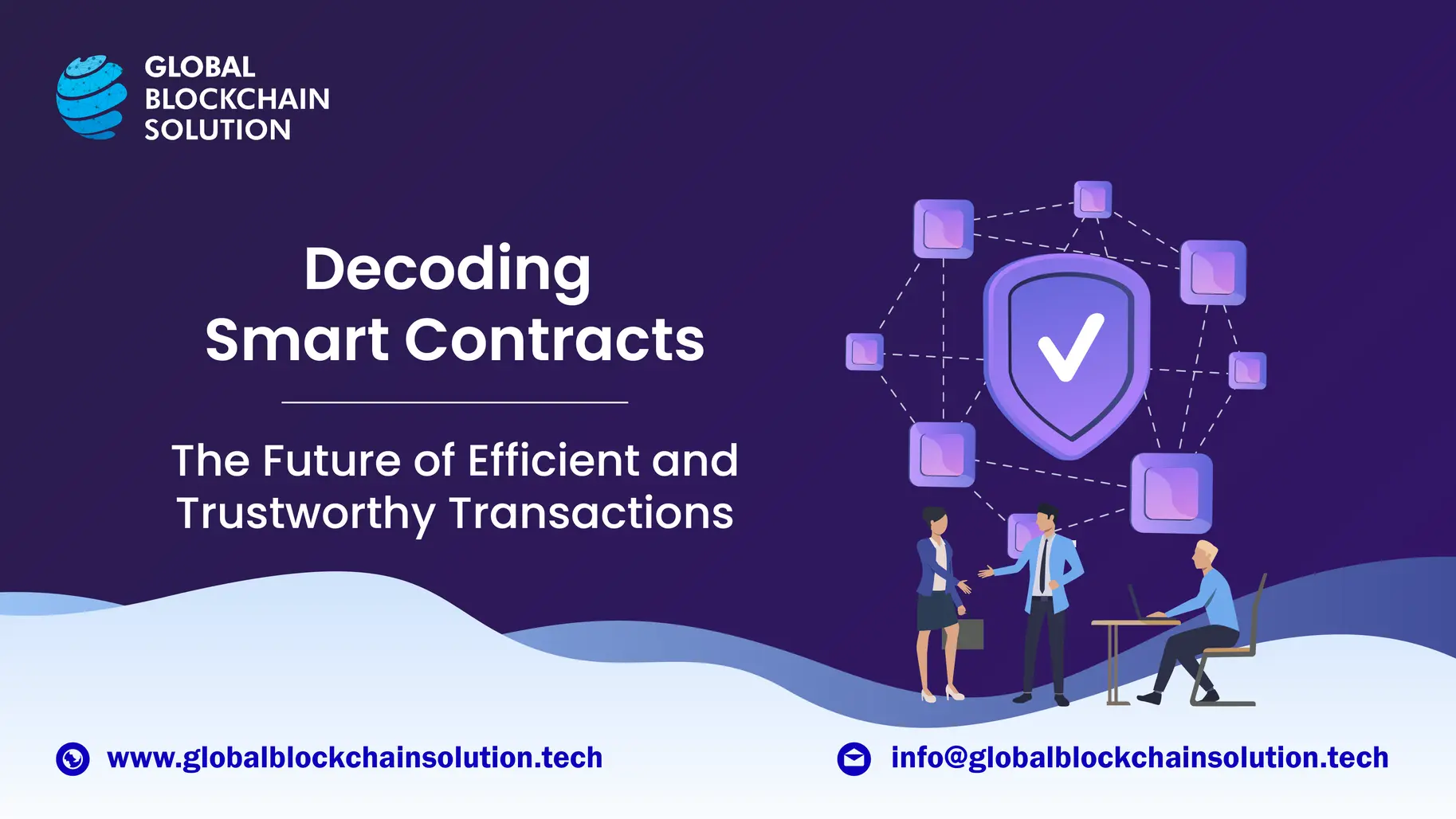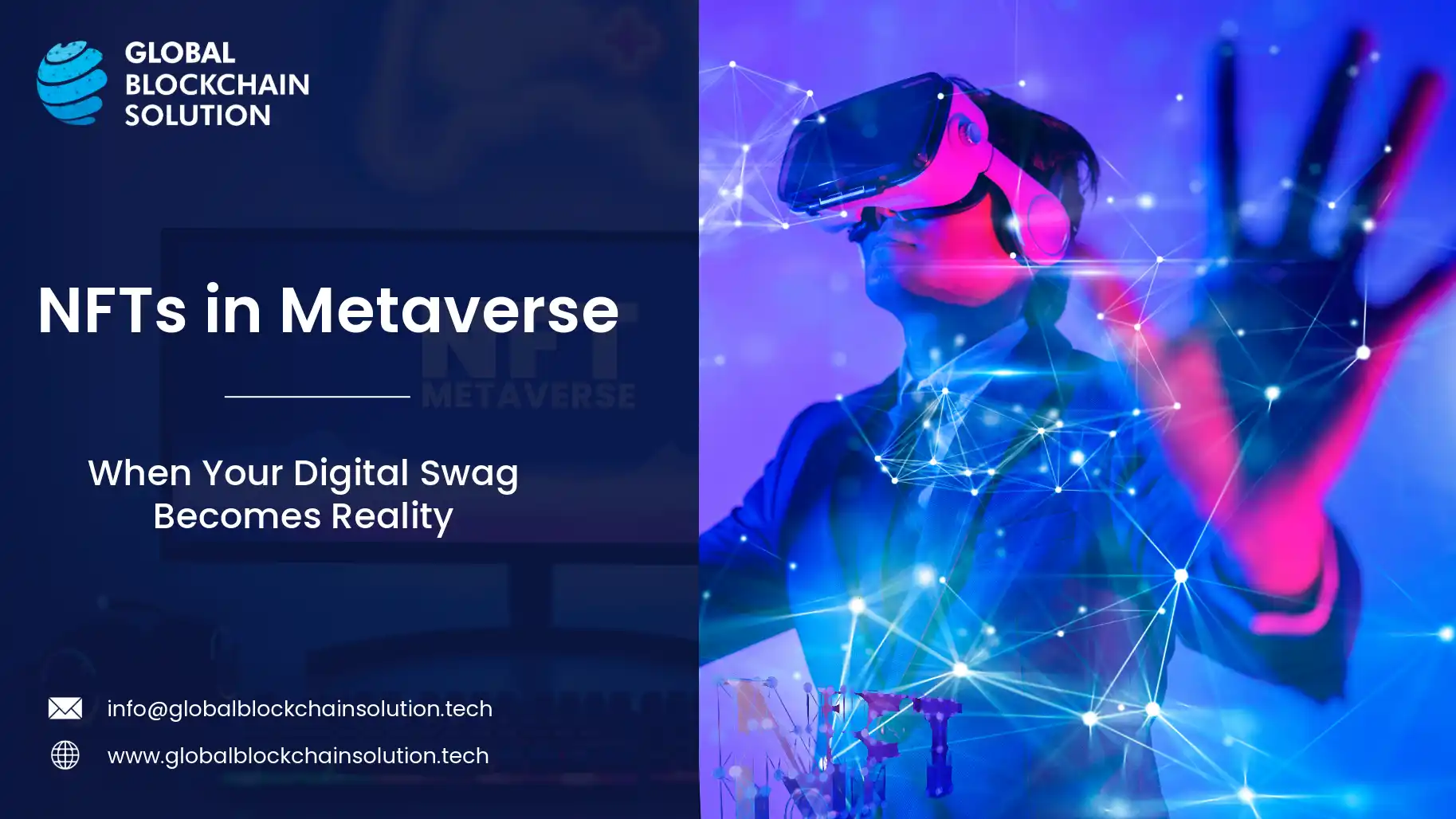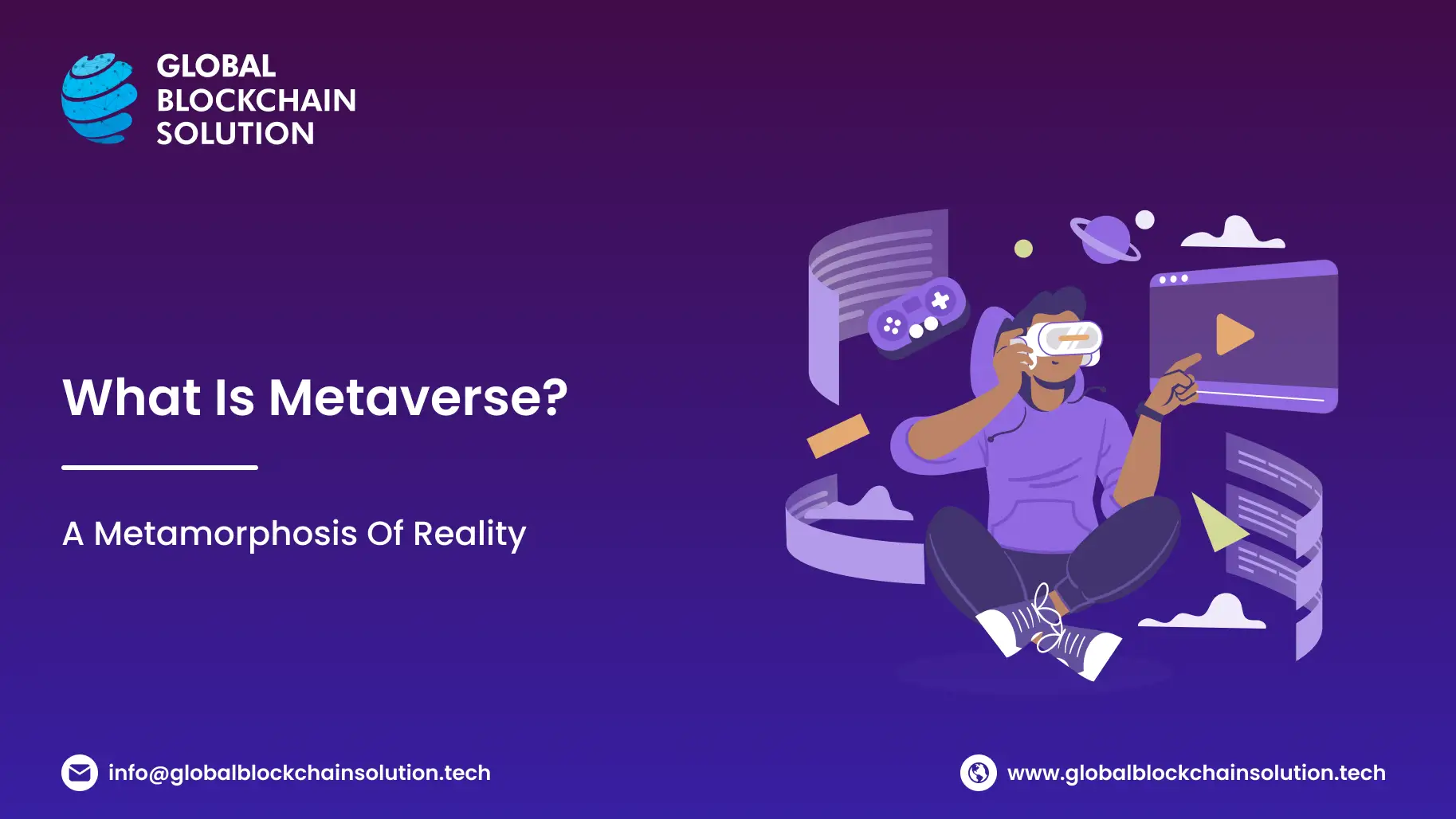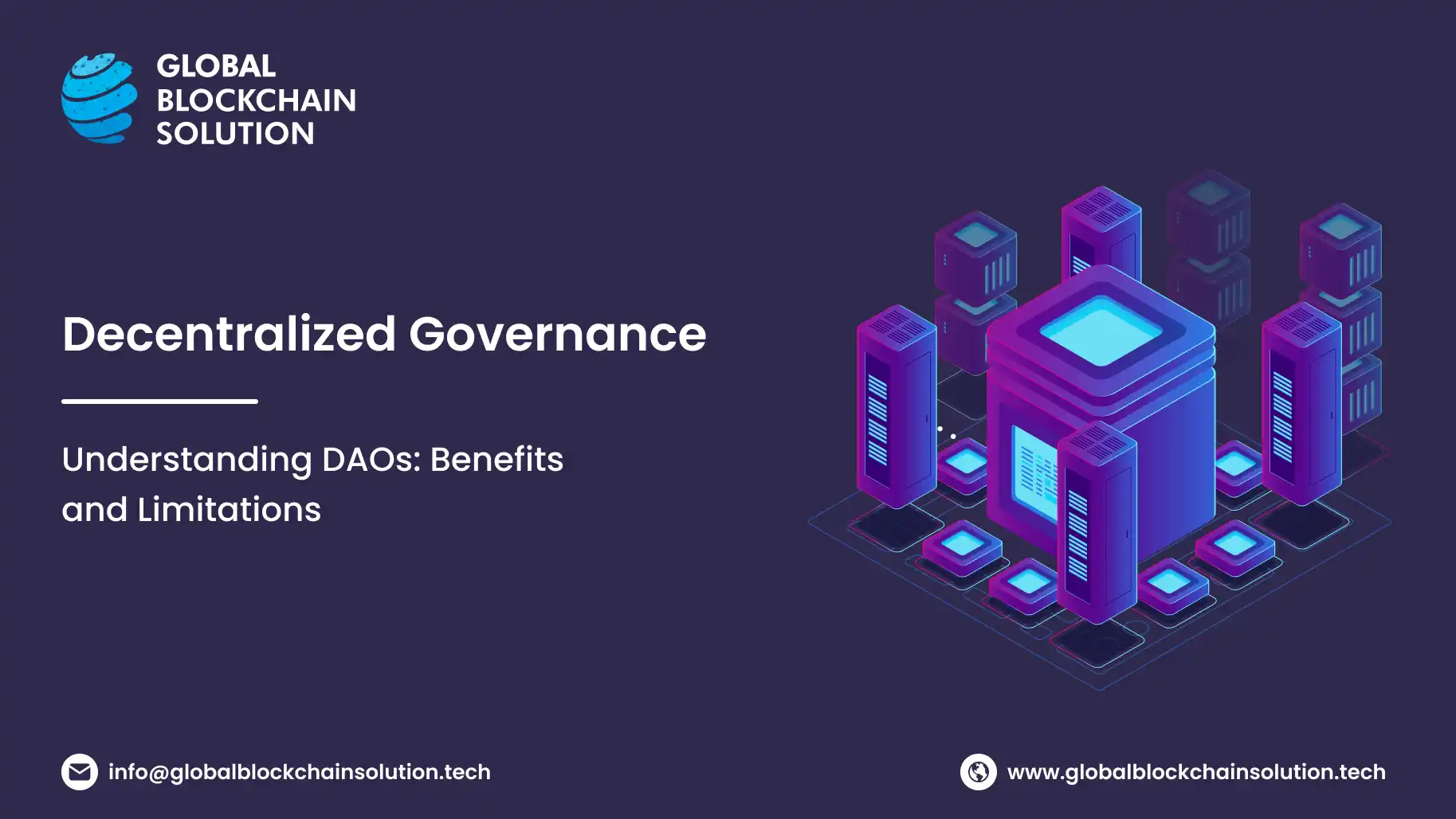In the realm of digitization, smart contracts represent a paradigm shift. But what are smart contracts? And, how do they work?
You can picture a smart contract like a vending machine. For it to function, certain conditions need to be met, i.e., you first need to insert a penny and then press the relevant button. If so, the machine automatically releases your desired item.
Transaction complete.

Similarly, a smart contract autonomously enforces itself once certain conditions are met. The implications of this transformative tool are vast, ranging from heightened transparency and efficiency to substantial cost reductions. We, at Global Blockchain Solution, will unravel these implications for you in this blog.
This Article Contains:
Smart Contracts: A Brief History
The term "smart contract" might seem like a recent jargon, but its conceptual foundation was laid decades ago. In the 1990s, computer scientist Nick Szabo envisioned digital contracts. He envisioned it as “a computerized transaction protocol that executes the terms of a contract.”
And, nearly two decades later, the genius of Vitalik Buterin and Gavin Wood evolved his vision into tangible technology. Ethereum launched in 2015. The blockchain was backed by the Solidity programming language and enabled programmers to craft Turing-complete smart contracts. This innovation introduced unparalleled transparency and trust to digital agreements.

Other blockchains like EOS, Cardano, and Tezos soon integrated smart contract capabilities, each offering unique features and catering to varied needs. Concurrently, tools emerged to aid developers in their smart contract endeavors, and the rise of Decentralized Finance (DeFi) showcased the immense potential of automated contracts in revolutionizing traditional financial systems.
From finance to supply chain verification and voting systems, the scope of smart contracts has expanded exponentially. Representing a blend of law and tech, smart contracts today signify a transformative approach to trust and agreements in our digital era.
How Smart Contracts Work?
Imagine entering a friendly wager with someone about the outcome of a football game. Instead of verbally agreeing and hoping the other person sticks to their word, you both place your money into a transparent, digital "safe." You can think of it like a computer program.
It has a set of rules: if Team A wins, the funds go to you; if Team B wins, the funds go to your friend. The game score is constantly updated on the internet. The program retrieves it from there and once the game ends, the safe automatically follows these rules and releases the money to the winner. No disputes, no middlemen, just a clear, automated process.
In essence, this encapsulates what are smart contracts.
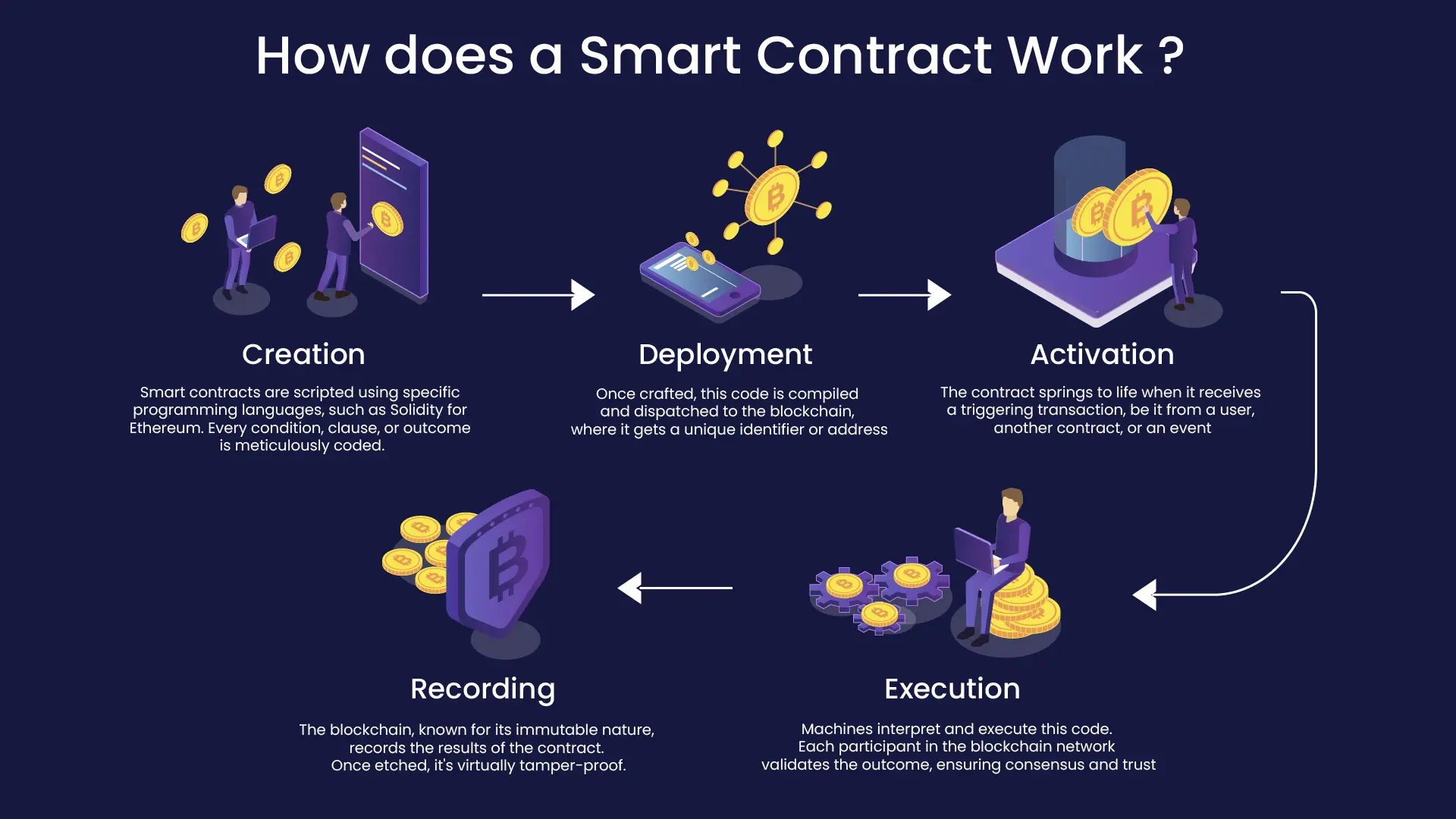
Delving deeper, a smart contract is a set of coded conditions and actions.
Here's a breakdown:
Creation
Smart contracts are scripted using specific programming languages, such as Solidity for Ethereum. Every condition, clause, or outcome is meticulously coded.Deployment
Once crafted, this code is compiled and dispatched to the blockchain, where it gets a unique identifier or address.Also Read: Blockchain Technology Explained: What is Blockchain?
Activation
The contract springs to life when it receives a triggering transaction, be it from a user, another contract, or an event (like our live game score.)Execution
Machines interpret and execute this code. Each participant in the blockchain network validates the outcome, ensuring consensus and trust.Recording
The blockchain, known for its immutable nature, records the results of the contract. Once etched, it's virtually tamper-proof.
Note: Often, smart contracts need real-world data, as we did for our friendly wager. This data is fed to the smart contract by 'oracles.' Ensuring the integrity and accuracy of these oracles is pivotal for the contract's successful execution.
In a world where trust is a premium and efficiency is sought after, smart contracts offer a blend of both, automating processes and ensuring transparent, tamper-proof outcomes.
Key Components and Benefits of Smart Contracts
Smart contracts offer tangible, real-world benefits:
Self-executing
Smart contracts are self-executing in nature, thereby saving you from tedious paperwork, auditing, monitoring, and negotiations.Trustless Systems
In an era where data breaches and trust issues are rampant, consensus mechanisms like proof-of-stake and BFT have turned the tables. They allow smart contracts to operate in a decentralized environment, minimizing the reliance on potentially fallible intermediaries.Also Read: What is consensus mechanism in blockchain? 25 consensus mechanisms to choose from
Tamper-proof Transparency
Every smart contract transaction is recorded on the blockchain – it's transparent yet tamper-resistant. This duality ensures accountability and reduces fraudulent activities.Economic Efficiency
A Capgemini study highlighted that smart contracts can have savings of up to $90 on average per premium payment in the insurance industry. By eliminating redundant processes and intermediaries, businesses in all segments can streamline across-the-board operations. Doing so can unlock their true revenue potential and focus on their core competencies.Enhanced Accuracy & Security
Automation reduces human error, and cryptographic security makes data breaches a daunting task, ensuring both accuracy and security in transactions.
How do smart contracts keep track of real-world objects or conditions?
Smart contracts thrive in the digital realm, executing codes and managing digital assets. But how do they interact with or respond to real-world events, objects, or conditions?
As mentioned above, the bridge between the on-chain world of smart contracts and the off-chain realm of real-world events is built by entities known as 'oracles'.
Oracles: The Bridge to Reality
At its core, an oracle is a service that provides smart contracts with data from the outside world. They act as the bridge between blockchains and external information.
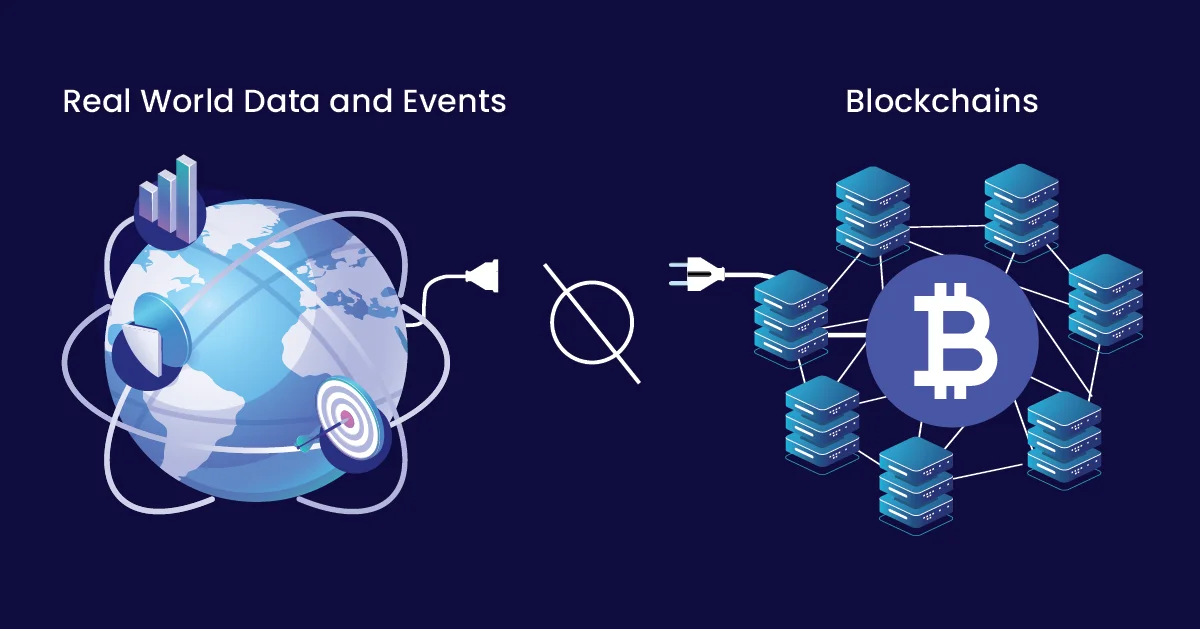
Here's how they work:
Data Source
Oracles begin by fetching data from trusted external sources. This could be from websites, data feeds, sensors, or even manual inputs.Data Verification
Before the data is sent to the smart contract, it often goes through a verification process, especially if the oracle is decentralized. Multiple data providers corroborate the information, ensuring its accuracy.Smart Contract Communication
Once verified, the oracle pushes this data to the smart contract. The contract, upon receiving this data, can execute predefined actions based on the provided information.Outcome
The smart contract processes the external information, and the results are recorded on the blockchain.For instance, if a smart contract is designed to release payment based on the outcome of a match, an oracle will provide the smart contract with the match’s final score, triggering the payment.
Types of Oracles
Centralized Oracles
These oracles rely on a single data source. For example, a single company or entity provides the data for the smart contract. While this approach can be faster and more streamlined, it poses a risk. If the sole data source is compromised or provides inaccurate data, the smart contract can execute incorrectly. This central point of failure is a notable drawback of centralized oracles.Decentralized Oracles
Unlike centralized ones, decentralized oracles aggregate data from multiple sources. This system enhances the accuracy and trustworthiness of the data since it's cross-verified from various points before being provided to the smart contract. The distributed nature of decentralized oracles makes them resistant to single points of failure or potential data manipulation.Human Oracles
Sometimes, smart contracts require subjective data or information that cannot be readily sourced from automated feeds or sensors. In such cases, human oracles step in. These are individuals or groups who manually input data into a smart contract. Human oracles are often used in scenarios like dispute resolutions, where human judgment and interpretation are necessary.
Challenges and considerations while developing smart contracts
While oracles significantly expand the capabilities of smart contracts, they introduce a layer of complexity and potential vulnerability. Since smart contracts are trustless and decentralized, relying on external data sources can pose a risk.
Similarly, real-world conditions can change rapidly. Oracles need to provide timely data to ensure smart contracts act on relevant and current information.
If an oracle provides incorrect or manipulated data, the smart contract might execute undesired actions. As a result, the choice and design of oracles, especially ensuring their trustworthiness and reliability, become pivotal.
Some other potential challenges of smart contracts include:
Immutability vs. Flexibility: The 2016 DAO hack, resulting in a loss of over $50 million, showcased the risks of the "code is law" principle. While the immutability of smart contracts ensures trust, it's a double-edged sword when errors or vulnerabilities are discovered post-deployment.
Scalability: As the popularity of smart contracts grows, so does the strain on networks. Solutions like Ethereum's Layer 2 scaling and danksharding are being developed, but challenges persist.
Legal Implications: The intersection of code and law is murky. In many jurisdictions, the legal status of smart contracts remains a gray area, requiring clearer regulations and frameworks.
Recognizing these challenges, the crypto community is working to resolve them. For instance, decentralized oracle networks, like Chainlink, aim to provide reliable, tamper-proof data to smart contracts. By decentralizing the data sourcing and verification process, such networks strive to maintain the trustless ethos of blockchain while connecting it to the vast world of external information.
Real-World Applications in Smart Contract
The canvas of smart contract applications is vast and varied:
Finance
Decentralized Finance (DeFi) stands as a testament to the disruptive potential of smart contracts. From traditional banking operations like lending and borrowing to innovative platforms for insurance and crowdfunding, DeFi is redefining finance. Up from just $0.54 million in revenue in 2019, DeFi projects are clocking in $16,960 million in 2023 – a figure that is expected to more than double ($34,700 million) by 2027 as per Statista.Supply Chain
The journey of a product, from its origin to your hands, is complex. Smart contracts simplify this. Using Hyperledger Fabric, Walmart can trace its mangoes stored in its U.S. stores in 2.2. seconds – a task that took its food safety team about 6 days, 18 hours, and 26 minutes despite all the data available in the system.Real Estate
Dubai, a city known for its skyscrapers and luxury, embarked on a "Smart Dubai" initiative. One of its facets involves using smart contracts for various administrative tasks, drastically reducing the bureaucratic red tape.Government
Estonia, a small Baltic nation, is a giant in e-governance.They're piloting smart contracts for public services, showcasing how governments can be efficient, transparent, and citizen-friendly.Healthcare
Patient data, often siloed in disparate systems, can now be securely shared, enabling holistic care in the healthcare industry. Smart contracts ensure data is shared only with authorized personnel, ensuring privacy and improving care.Energy
The renewable energy sector is witnessing a silent revolution. Platforms like Powerledger use smart contracts to facilitate peer-to-peer energy trading, optimizing consumption and distribution.
What are the Platforms for Smart Contract Development?
As the realm of blockchain technology has expanded, so has the ecosystem of platforms that support smart contract development. These platforms, often referred to as blockchain platforms or networks, provide the necessary infrastructure for creating, deploying, and executing smart contracts.
Here's a closer look at some of the prominent platforms:
Ethereum
Often hailed as the pioneer of smart contract platforms, Ethereum introduced the world to programmable contracts with its Turing-complete language, Solidity.Ethereum offers a robust decentralized platform with a vast developer community, which has led to a plethora of decentralized applications (DApps) and Decentralized Finance (DeFi) projects.

With its popularity, Ethereum has faced scalability issues leading to congestion and high transaction fees. However, the upcoming Ethereum 2.0 upgrade aims to address these concerns.
BNB Smart Chain (BSC)
BNB Smart Chain is a blockchain network built for running smart contract-based applications, ensuring a parallel chain to Binance Chain.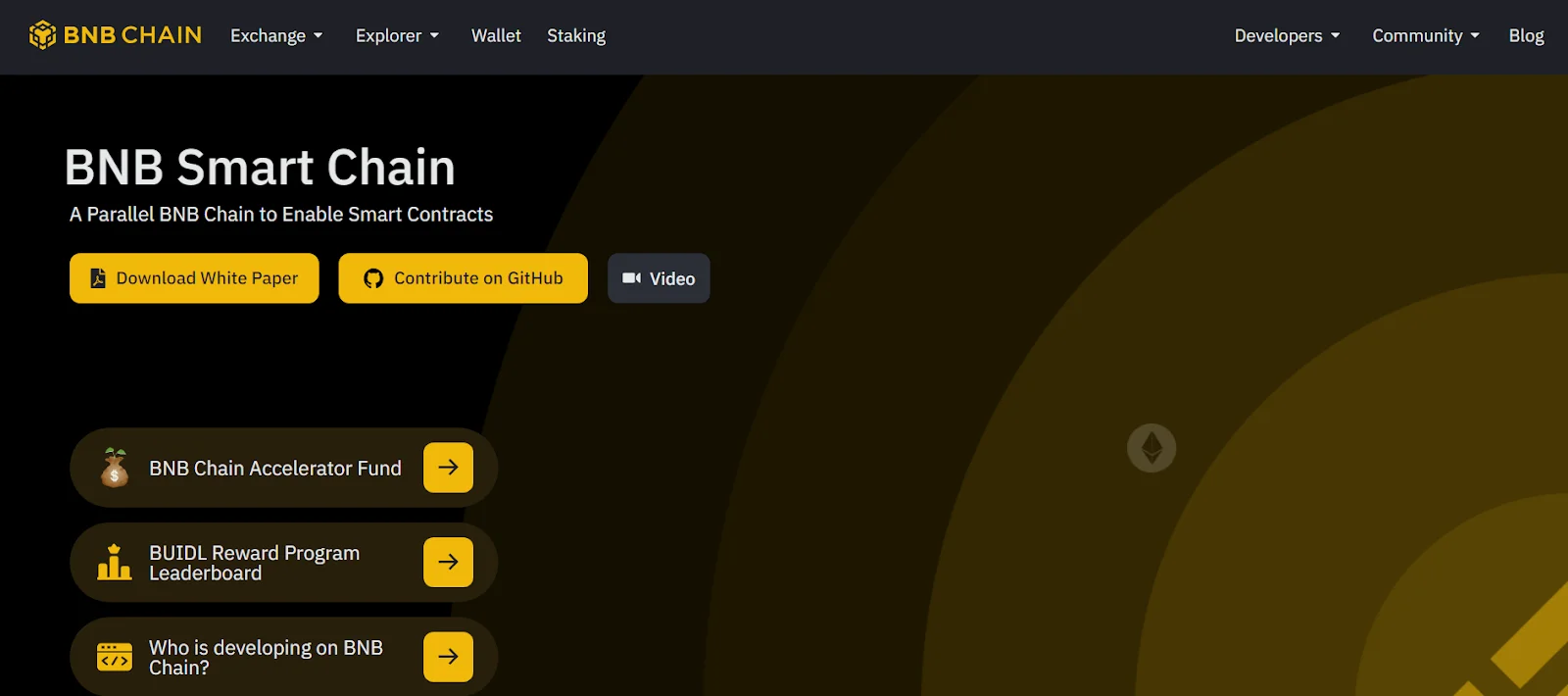
Known for its fast transaction times and lower fees compared to Ethereum, BSC has gained traction among many DeFi projects and users.
BSC offers cross-chain compatibility with Binance Chain.
Cardano
Developed with a research-first approach, Cardano offers a more secure and scalable platform for smart contract deployment.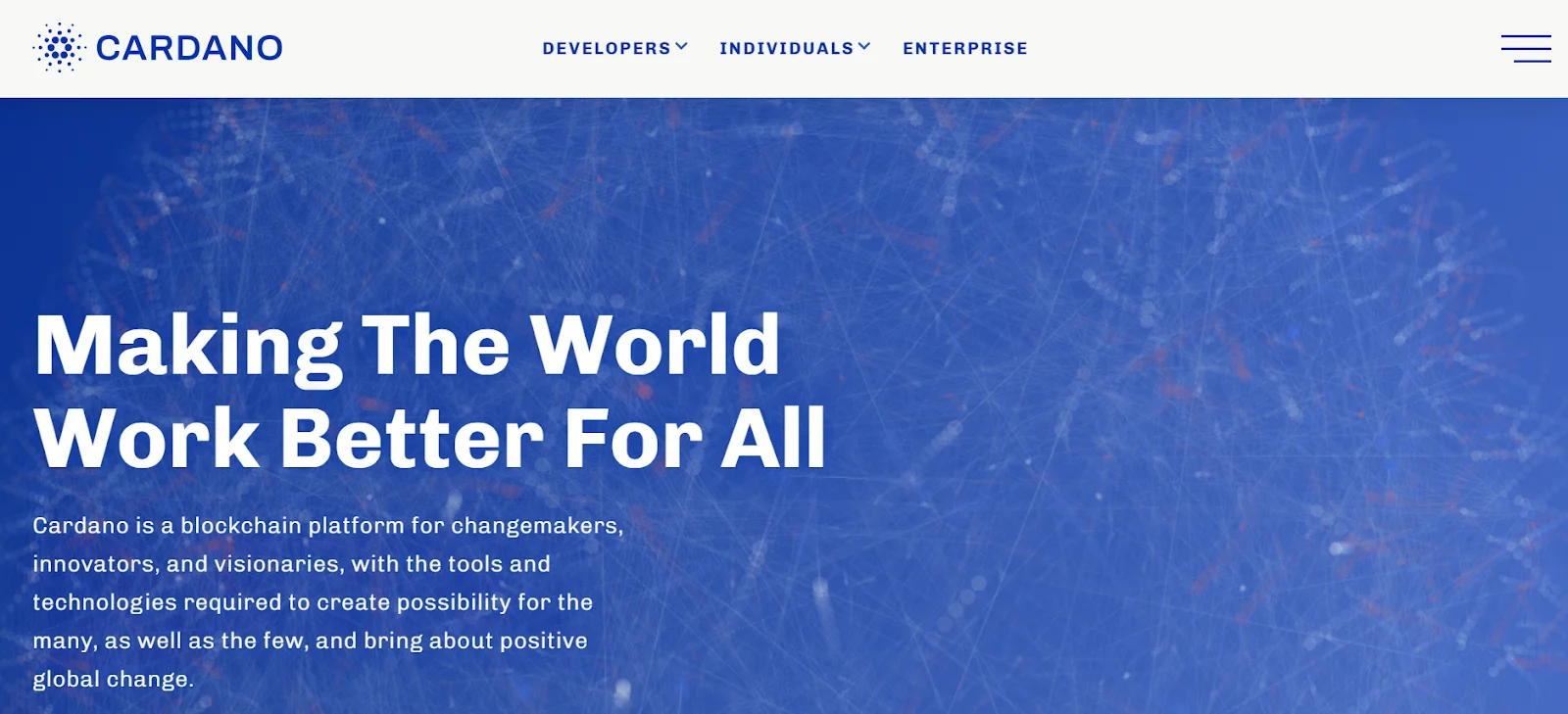
Cardano's emphasis on peer review and formal methods ensures a high level of accuracy and reliability in its codebase.
Plutus, Cardano's smart contract development platform, enables powerful smart contract capabilities.
Tezos
A decentralized blockchain that can evolve by upgrading itself, Tezos has positioned itself as a flexible solution in the smart contract space.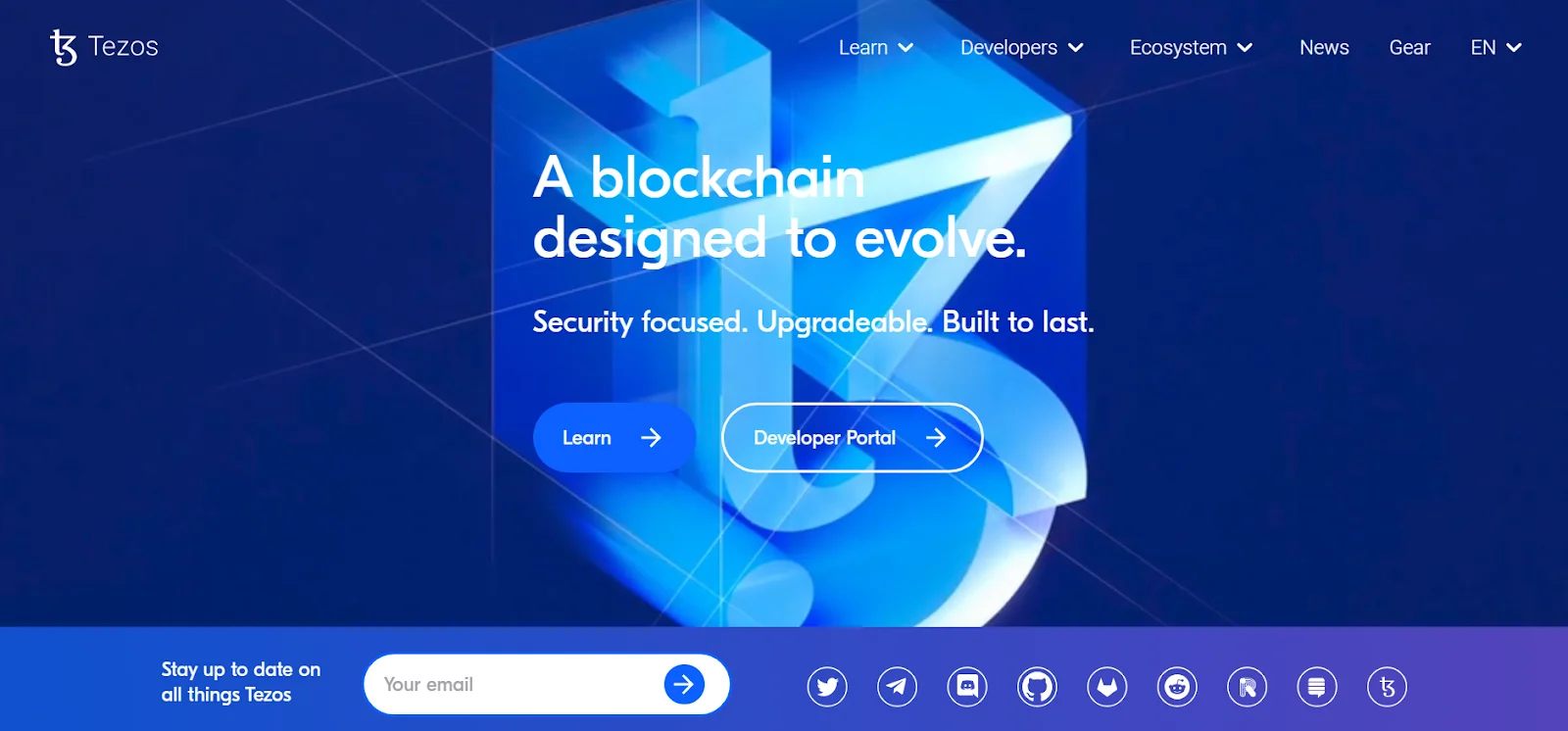
Tezos utilizes on-chain governance and a proof-of-stake consensus mechanism. Its smart contracts are written in a language called Michelson, designed for formal verification.
Polkadot
Polkadot aims to enable different blockchains to transfer messages and value in a trust-free fashion, making a web of interconnected chains.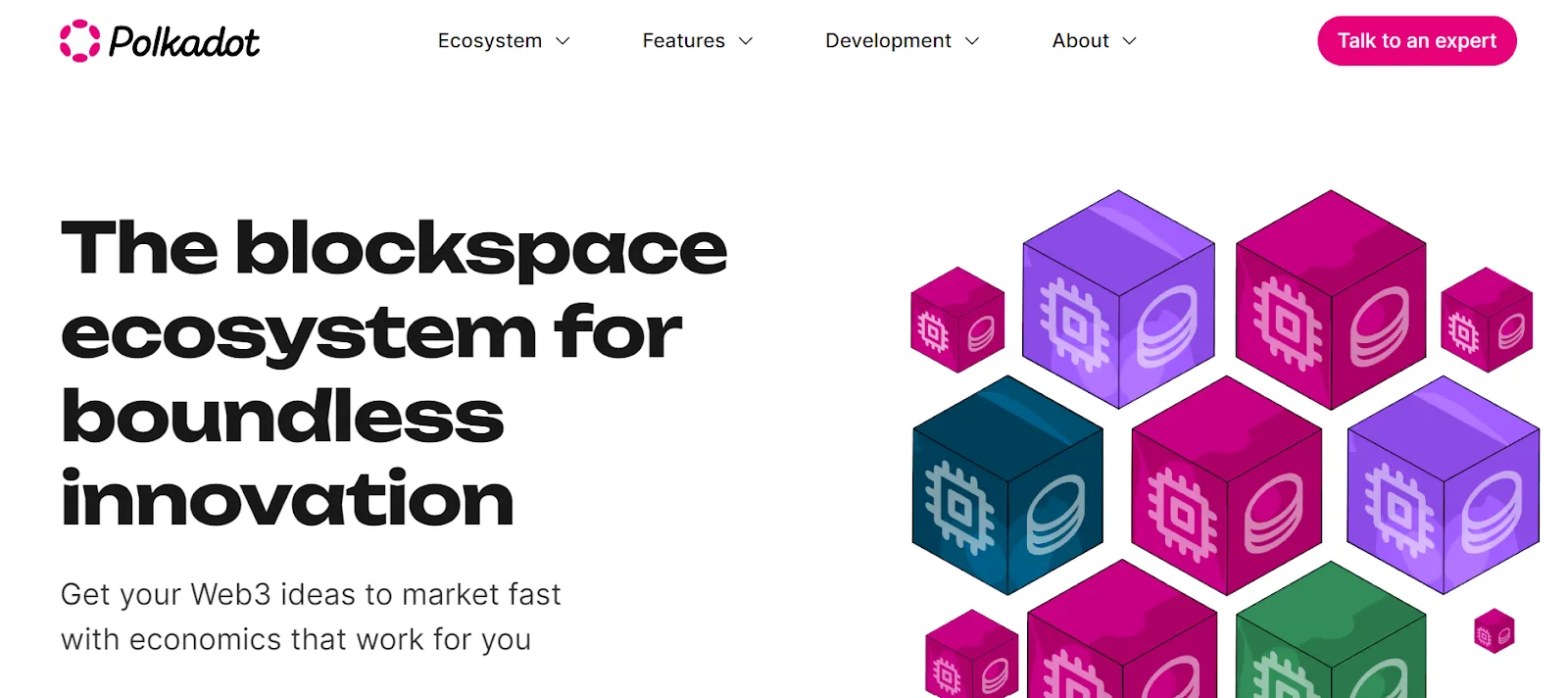
Polkadot's multi-chain structure allows for interoperability, scalability, and shared security. The platform uses the Substrate framework for building custom blockchains that can integrate with Polkadot.
EOS
EOS is designed to support large-scale applications, boasting the ability to conduct millions of transactions per second.EOS eliminates transaction fees and facilitates the development of DApps with its WebAssembly-powered platform.
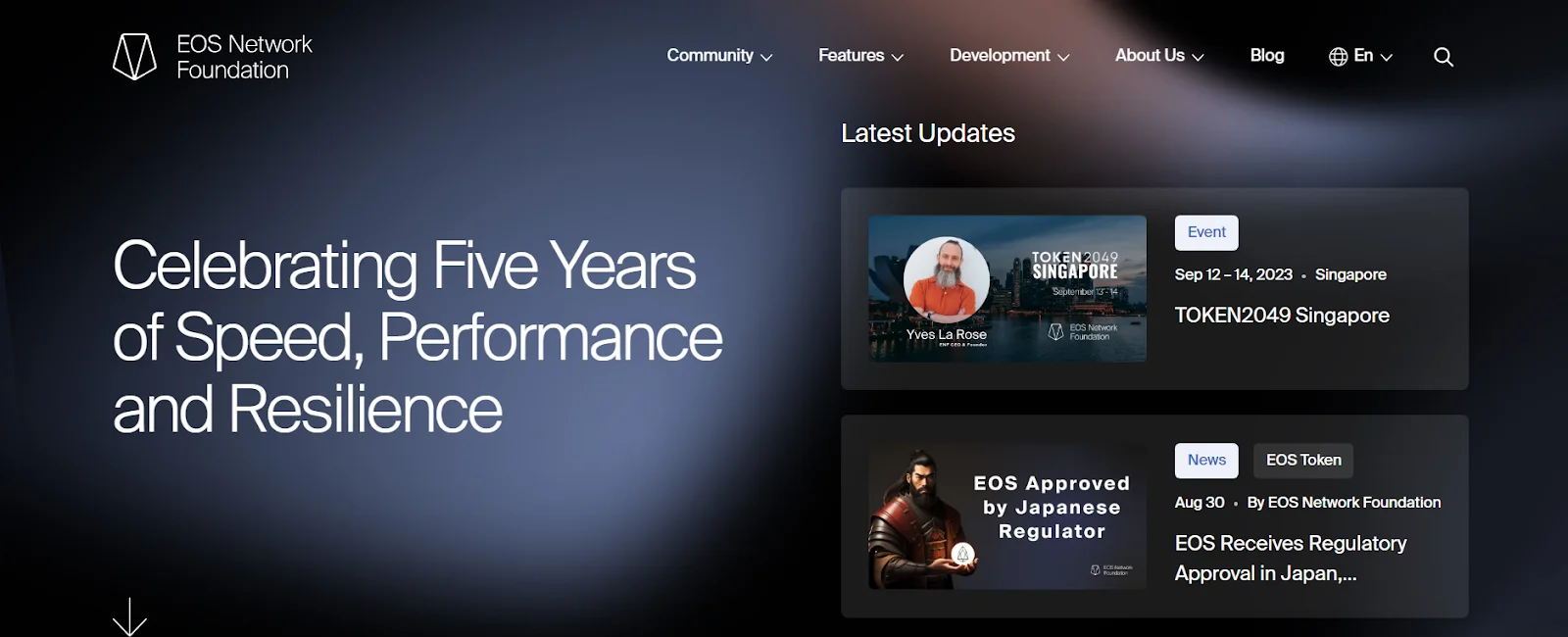
Developers can use C++ to create smart contracts on EOS, offering a familiar environment for many.
Tron
Originally an Ethereum-based token, Tron evolved into its platform aiming to build a decentralized internet.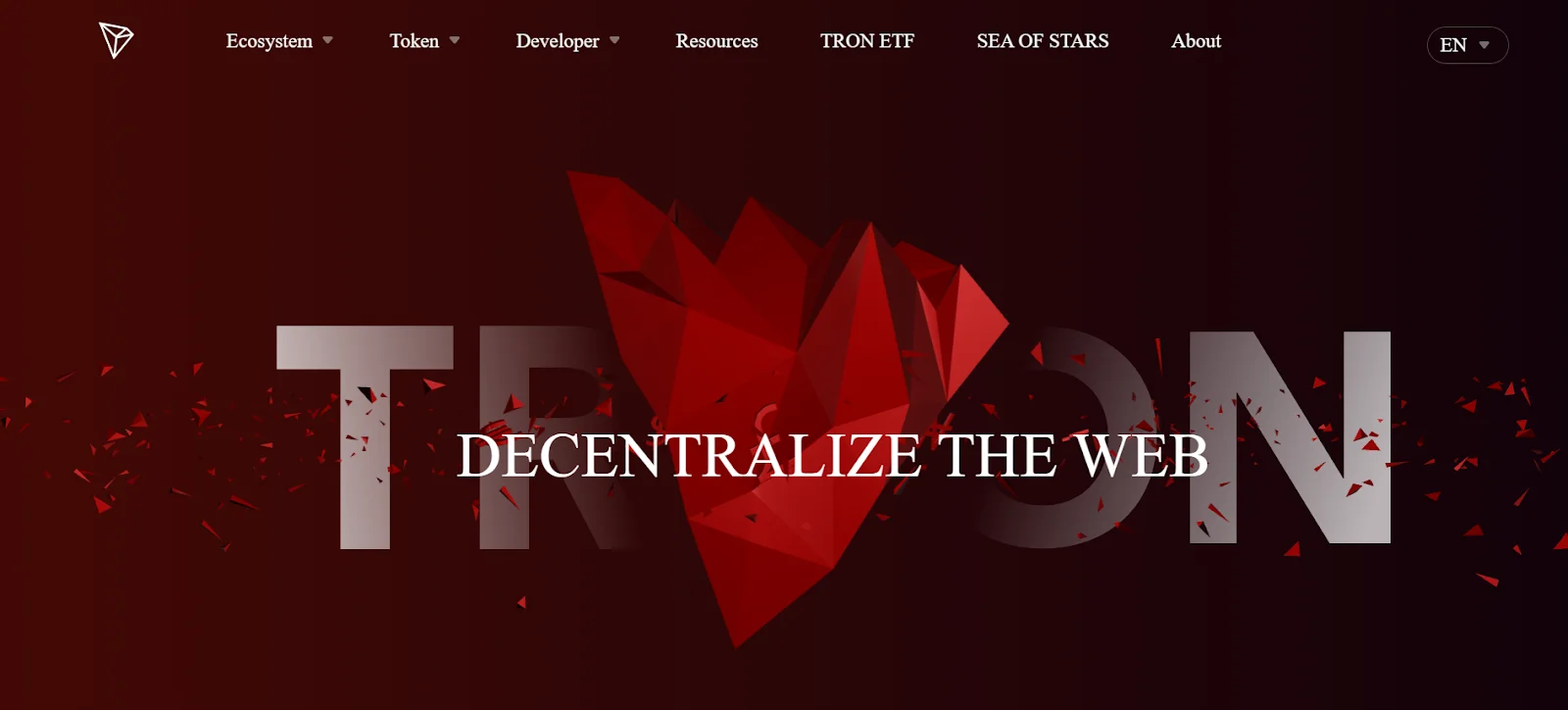
Tron is known for its high throughput of up to 2,000 Transactions Per Second (TPS) and aims to eliminate middlemen from digital content sharing using its blockchain.
Tron is compatible with Ethereum's Solidity language, allowing for easier porting of projects.
Hyperledger Fabric
Spearheaded by IBM and the Linux Foundation, Hyperledger Fabric is a private and permissioned blockchain solution tailored for enterprise needs.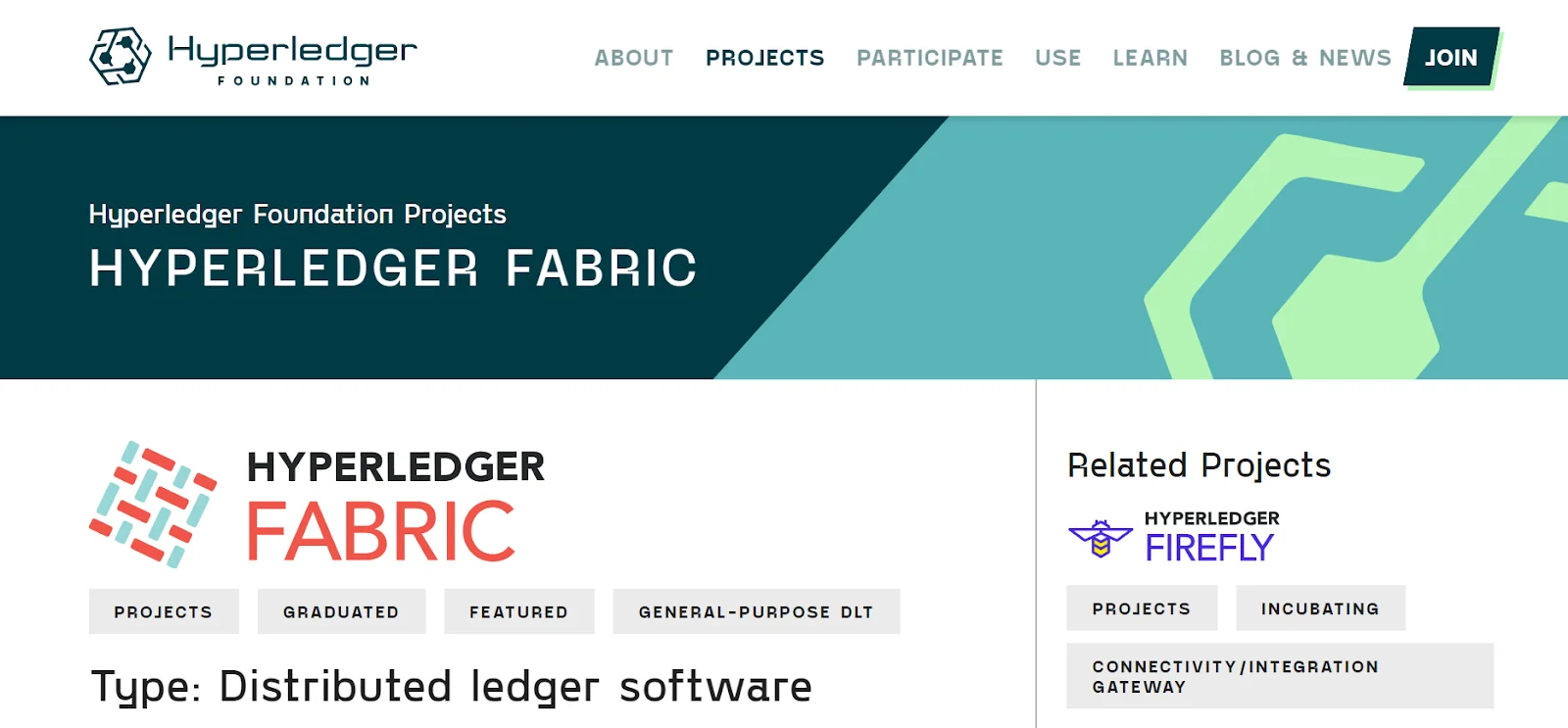
It offers modular architecture, enabling plug-and-play components like consensus mechanisms and identity services.
Chaincode, Hyperledger's equivalent to smart contracts, can be developed using Go, JavaScript, and Java.
Developers and organizations can choose from a range of options, each offering unique capabilities and features. As the blockchain space continues to evolve, these platforms will likely see further innovations, integrations, and enhancements, making the development of smart contracts more efficient, secure, and versatile.
Challenges and The Future of Smart Contracts
Smart contracts have come a long way since their conceptualization by Nick Szabo in the 1990s. Yet, the journey of smart contracts is far from over. As we look ahead, several trends and evolutions promise to shape the next phase of smart contract development and adoption.
Interoperability Across Chains
The blockchain ecosystem is growing, with multiple chains co-existing. In the future, we can anticipate smart contracts that communicate across these chains. Imagine a scenario where a smart contract on the Ethereum blockchain can seamlessly trigger another contract on the Cardano network. Such interoperability would enhance the flexibility and utility of smart contracts, allowing for more complex, interconnected systems and applications.Domain-specific Blockchains
While the current landscape comprises general-purpose blockchains, the future might see blockchains tailored for specific industries or use cases. These domain-specific chains would come with smart contract capabilities optimized for their respective sectors. For instance, a healthcare-focused blockchain might feature smart contracts adept at handling patient data privacy concerns.Advanced Formal Verification
As smart contracts handle more intricate operations and larger value transactions, their correctness becomes paramount. Formal verification tools, which mathematically prove the correctness of code, will become essential. These tools, such as Certora Prover and Solidity SMTChecker, will ensure that the contract behaves precisely as intended, reducing the risks of vulnerabilities or unintended behaviors.On-chain Governance and DAOs
Decentralized Autonomous Organizations(DAOs) are a testament to the potential of on-chain governance. DAOs operate based on pre-defined rules encoded in smart contracts. In the future, we might see organizations, both big and small, adopting DAO-like structures. Decisions, from fund allocation to organizational changes, could be made transparently on-chain, leveraging the power of smart contracts.Enhanced Privacy and Zero-Knowledge Proofs
While blockchain's transparency is one of its core strengths, there are scenarios where privacy is crucial. Certain cryptographic techniques, like zero-knowledge proofs (including interactive ZK-proofs, sigma protocols, etc.), can enable smart contracts to verify transactions without revealing the specifics. Such advancements will open doors for smart contracts in areas like confidential voting or private financial transactions.Integration with AI and IoT
The confluence of smart contracts with other technologies like Artificial Intelligence (AI) and the Internet of Things (IoT) holds immense potential. Smart contracts could leverage AI algorithms for decision-making or use data from IoT devices to trigger specific actions.Regulatory Clarity and Frameworks
As the adoption of smart contracts grows, regulatory bodies worldwide will need to offer clearer guidelines and frameworks. These regulations will ensure that smart contracts are legally enforceable, bolstering their adoption in mainstream sectors. Additionally, standardized practices could emerge, guiding the development and deployment of these contracts.Evolution of Contract Development Platforms
While platforms like Ethereum, Cardano, Hyperledger Fabric, and EOS lead the smart contract space, the future will witness the evolution of newer, more specialized platforms. These platforms might offer enhanced scalability, reduced transaction costs, or specific features tailored for certain industries or applications.User-friendly Interfaces and Tools
For widespread adoption, smart contracts need to be accessible not just to developers but to the average user. We can expect the emergence of more intuitive interfaces, platforms, and tools that make creating, deploying, and interacting with smart contracts as straightforward as using a regular application.Post-quantum Cryptography
The advent of quantum computers poses a threat to current cryptographic standards. The future of smart contracts will need to account for this, integrating post-quantum cryptographic techniques to ensure their security in a quantum computing era.
Smart contracts are not a fleeting tech trend. They are the vanguard of a new era, ushering in unprecedented levels of transparency, efficiency, and democratization in transactions. As they continue to evolve, their potential to reshape industries and societal systems becomes increasingly evident.
In this technological renaissance, smart contracts stand tall, promising a future where trust is digital, transparent, and tamper-proof. Start your smart contract journey today, get on a 15-minute call today to pick our brain.
Frequently Asked Questions
1. What is a smart contract in crypto?
A smart contract is a self-executing code that automatically enforces an agreement between parties. It runs on the blockchain as a decentralized application. Smart contracts allow for transparent, conflict-free transactions without intermediaries. The terms of the agreement are predefined in lines of code, which get executed when predetermined conditions are met. Smart contracts are an essential part of many cryptocurrency systems, especially Ethereum.
2. What language are smart contracts written in?
The most common languages used for writing smart contracts are Solidity and Vyper for Ethereum, Michelson for Tezos, Rust for Solana, and Chaincode for Hyperledger Fabric. The language depends on the blockchain platform. These languages are Turing complete and allow complex logic and computations to be encoded.
3. Is Ethereum a smart contract?
Ethereum is not itself a smart contract. Rather, it is a blockchain platform that enables developers to write and deploy smart contracts. Ethereum was the first blockchain to introduce smart contract capabilities in 2015. The Ethereum Virtual Machine (EVM) executes the smart contract code on the network. Ethereum smart contracts are primarily written in Solidity.
4. How do I create a smart contract?
Decide on the blockchain platform, like Ethereum or BSC.
Learn the smart contract language used on it, like Solidity for Ethereum.
Code the logic, set conditions, and actions in the contract.
Test the contract thoroughly for errors and vulnerabilities.
Deploy the contract to the chosen network.
Interact with the deployed contract as per the coded logic.
For expert guidance and end-to-end support on your smart contract project, connect with us at Global Blockchain Solution. Our team can help you craft optimized, secure smart contracts tailored to your needs. Book a 15-minute call today to get started!

